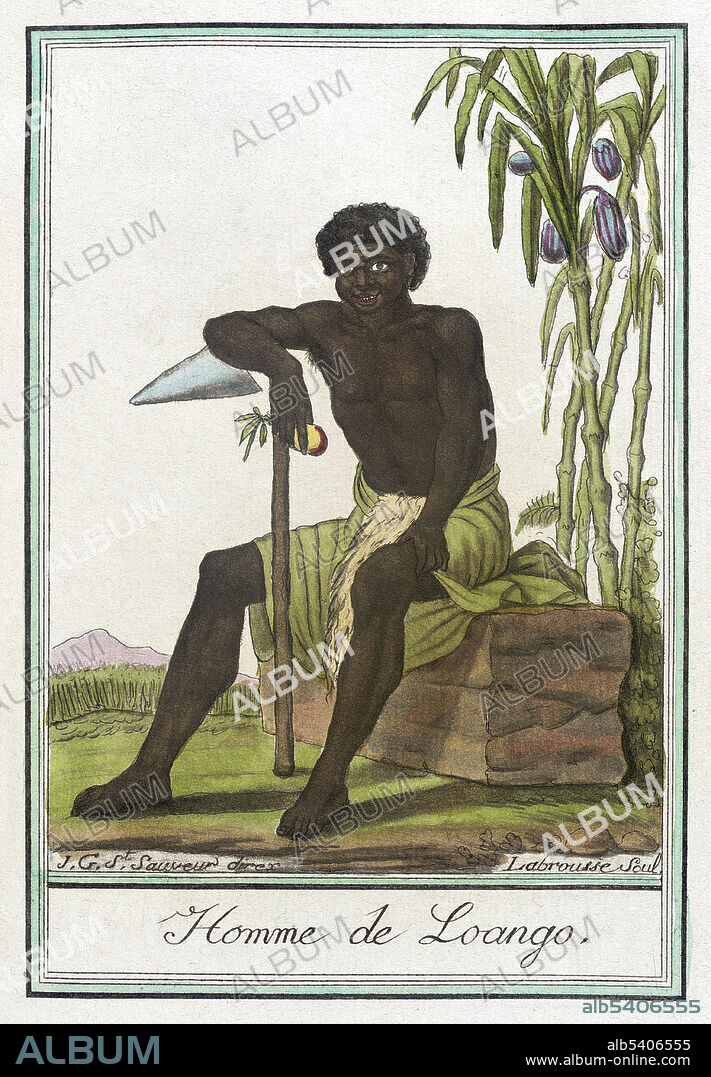alb5406555
Central Africa, Loango Man,1797

|
Ajouter à une autre Lightbox |
|
Ajouter à une autre Lightbox |



Avez-vous déjà un compte? S'identifier
Vous n'avez pas de compte ? S'inscrire
Acheter cette image.
Sélectionnez l'usage:

Titre:
Central Africa, Loango Man,1797
Légende:
Voir la traduction automatique
Homme de Loango. Loango Man. The Kingdom of Loango was a pre-colonial African state, during approximately the 16th to 19th centuries in what is now the western part of the Republic of the Congo and Cabinda. Situated to the north of the more powerful Kingdom of Kongo, at its height in the 17th century Loango influence extended from Cape St Catherine in the north to almost the mouth of the Congo River. Loango exported copper to the European market, and was a major producer and exporter of cloth. A rule of succession was in place around 1600, in which the king gave command over four provinces to members of his family, called the provinces of Kaye, Boke, Selage, and Kabango, and the king was to be chosen from a rotation between them. When the king died the ruler of Kaye took over, and if the rule was followed then the ruler of Boke took his place; the other two provincial rulers advanced as well. Costumes of Different Countries, hand-tinted engraving by Labrousse, published by Jacques Grasset de Saint-Sauveur, 1797.
Crédit:
Album / Science Source / Los Angeles County Museum
Autorisations:
Modèle: Non - Propriété: Non
Questions sur les droits?
Questions sur les droits?
Taille de l'image:
3334 x 4800 px | 45.8 MB
Taille d'impression:
28.2 x 40.6 cm | 11.1 x 16.0 in (300 dpi)
Mots clés:
 Pinterest
Pinterest Twitter
Twitter Facebook
Facebook Copier le lien
Copier le lien Email
Email
